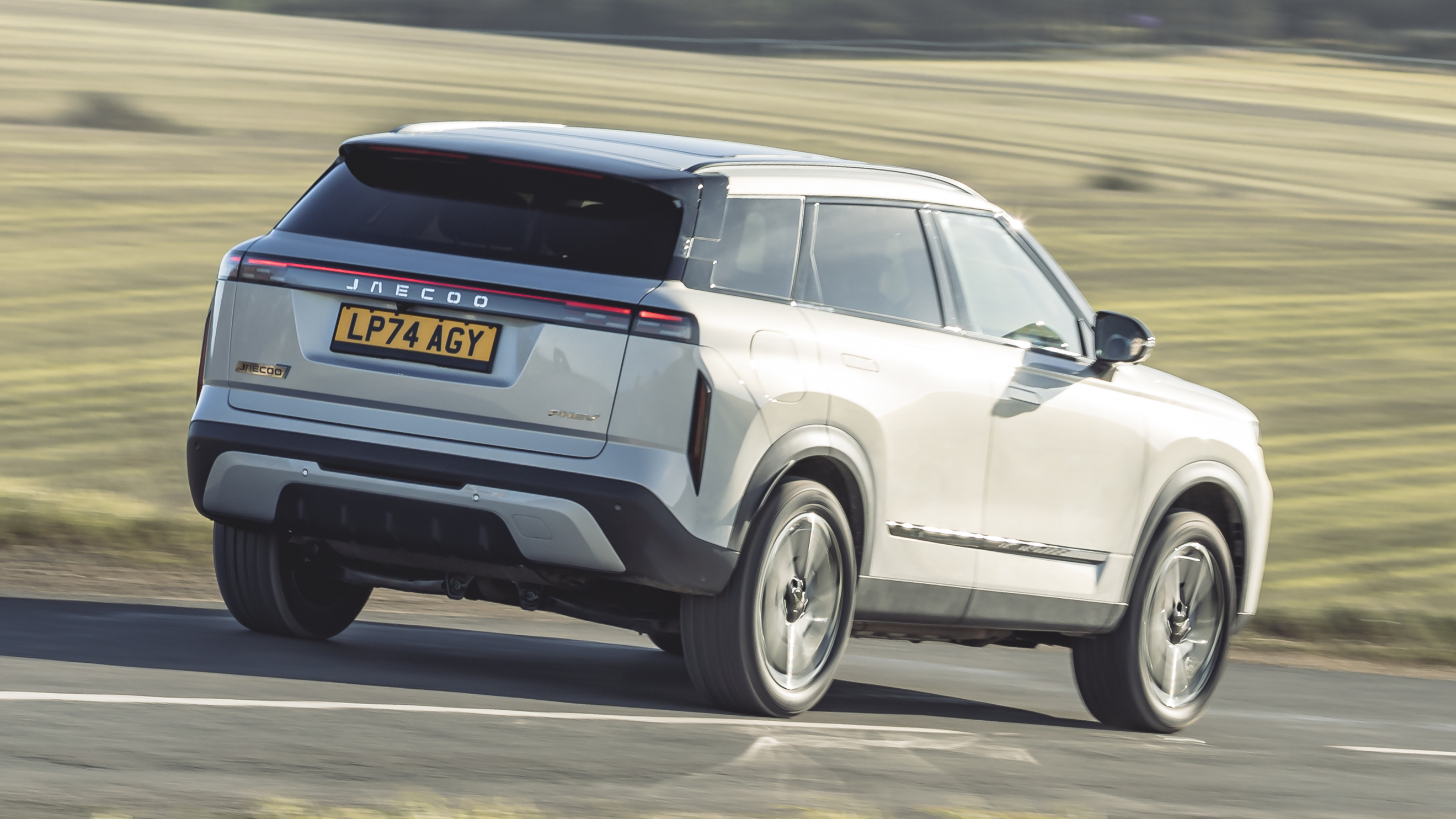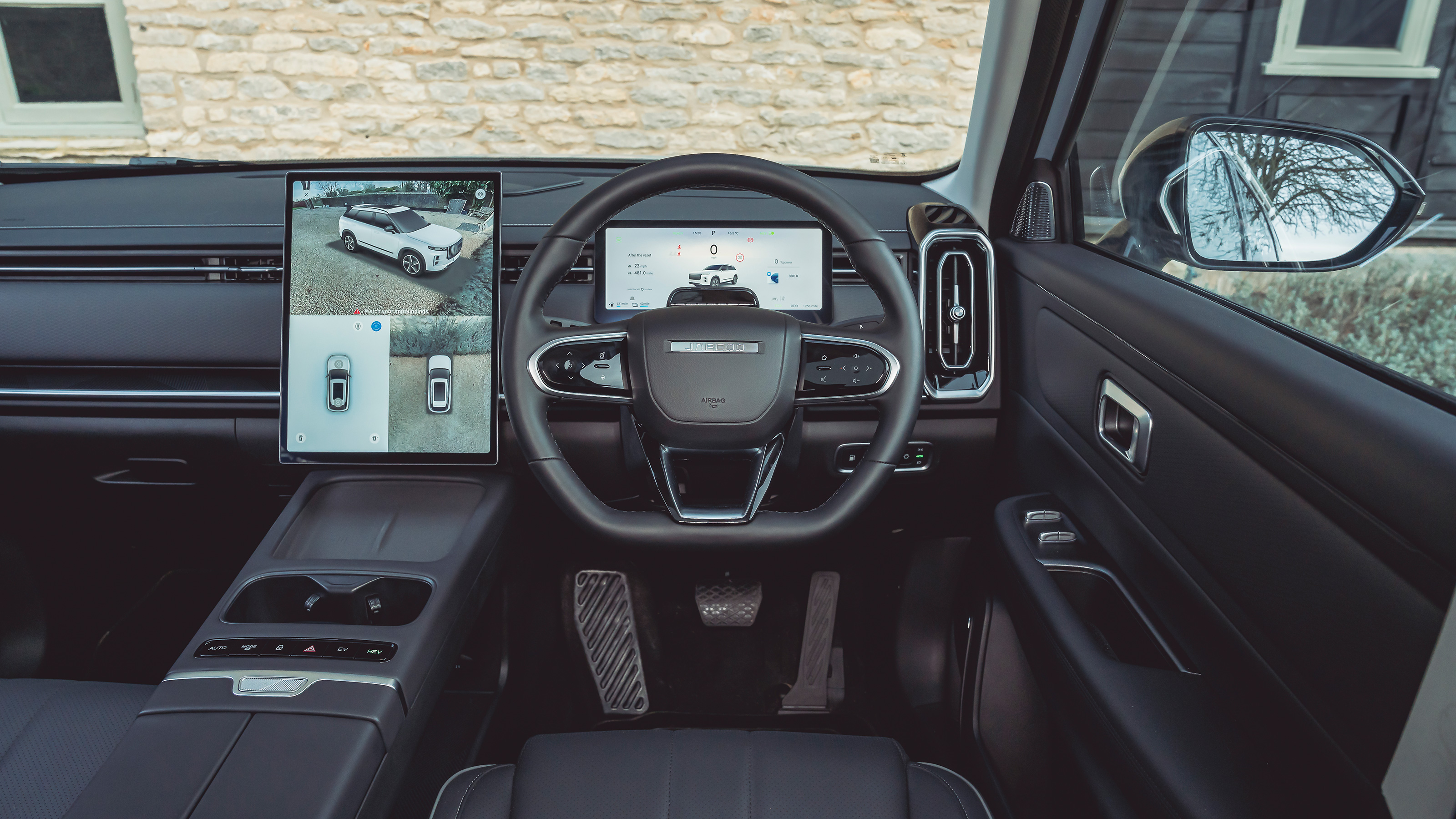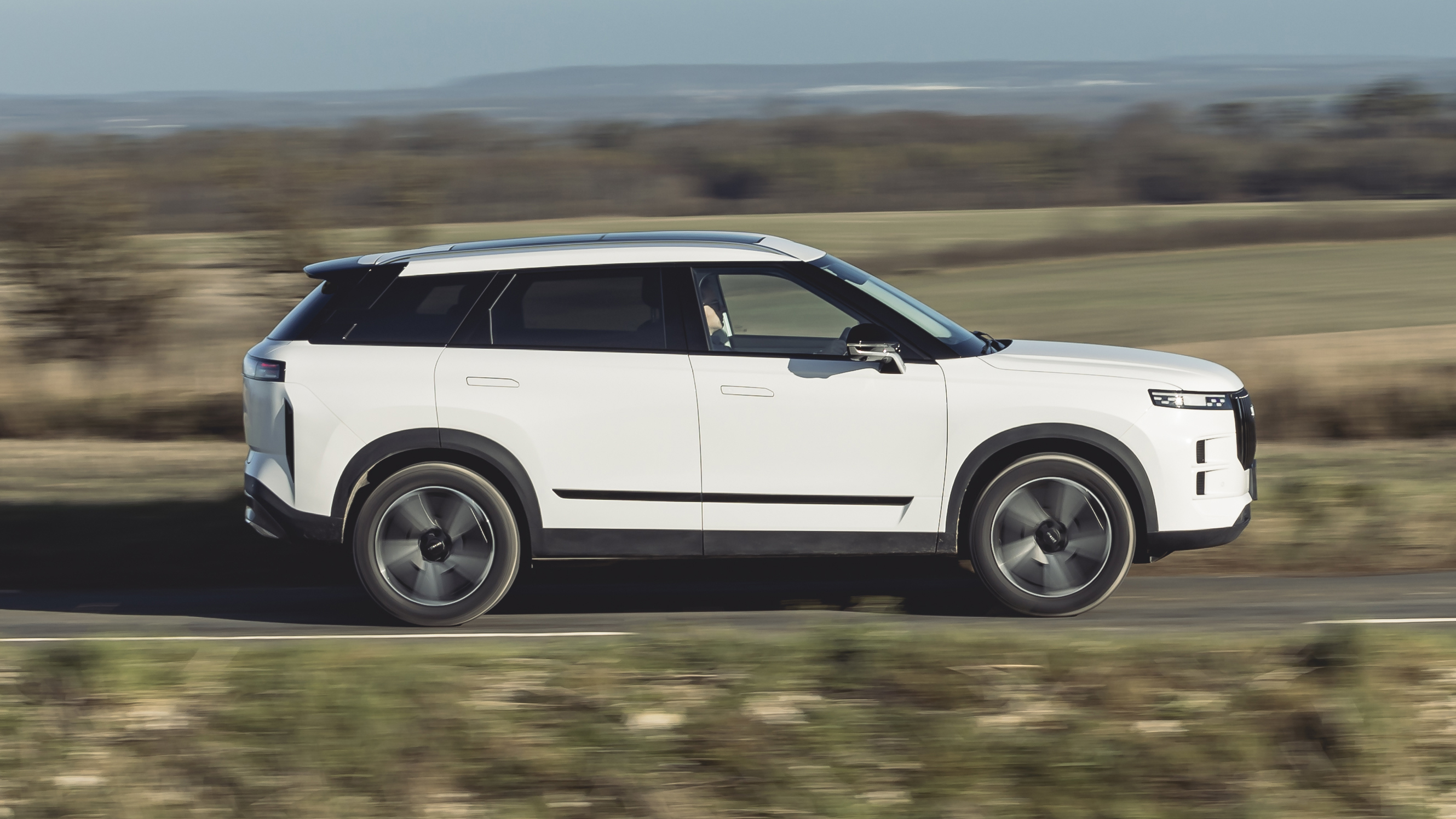
Interior
What is it like on the inside?
Strangely, there are two interiors. We’ve… never really seen this before. Different trim choices or upholstery colours for different specs, sure. But a different door insert? New switchgear? A whole new flavour of gearstick? That makes the 7 a bit of an oddball.
Why does one car have two noticeably different cabins?
The thinking goes thus: the petrol-only Jaecoo is a rough-and-tumble SUV, so buyers might like to feel a bit of that toughness inside. Hence there’s chunky macho door handles, exposed screwheads, and proper buttons for adjusting the mirrors. All very Land Rover Defender. It’s like sitting inside a DeWalt toolbox.
But in the hybrid, it’s a different story. Because this one is for your electro-eulogising urban tech-fan-about-town who wants to sit inside a smartphone.
So there are minimalist, unlabelled window switch rockers. Controls for the lights and mirrors disappear entirely and materialise in a touchscreen sub-menu. Useful shortcut keys appear on the centre console. Even the centrepiece – the overwrought gear selector modelled on Darth Vader’s knee joint – is binned and replaced with a Mercedes-style column wand for shifting between drive and reverse. Which means a complete rethink of how the wiper stalks work too.
Now, you won’t be swapping between two 7s, like we did to test them. You’d choose one, and get used to it. But it is a slightly bizarre strategy, to give two identical cars two noticeably different cabins, depending on what Jaecoo thinks the intended customer will prefer. Naturally, Top Gear warmed to the one with buttons that can be operated without devoting 110 per cent of your attention to a touchscreen slab that’s brighter than a Golden Globe winner’s smile.
Material quality is a mish-mash: the seats are supple and your eyes are drawn to the stately vents and soft-touch areas up top, but around the door handles and lower reaches of the cabin, it’s not convincing as a ‘premium’ car. An Audi Q3 is hardly plush inside, but there’s a greater sense of consistency.
Looks like I need to be touchscreen-literate…
Indeed. The Tesla inspiration is strong here, thanks to a pair of huge displays. The ‘Deluxe’ trim offers a 13.2-inch display, while Luxury swaps that out for a 14.25-incher. Frankly we preferred the smaller one simply on the basis it was less of a stretch to reach its extremities.
The loading times are snappy, the display crisp and the general interface familiar to tablet users, but there’s no getting around the fact these mega-screens are difficult to operate safely while driving. When legislation catches up with the pixel arms race, dashboards like this will seem like a bizarre blind alley in the history of the motor car.
What about practicality?
No shortage of space – there’s legroom for adults in the second row and a flat floor section means even the middle passenger won’t be cramped by a transmission tunnel. Boxy proportions mean a decent area of glass too – sounds obvious but niche-busting cars with swoopy rooflines (think BMW X2, Audi Q3 Sportback, Ford Capri) sacrifice the view out for little’uns in the name of ‘style’.
Meanwhile the boot offers a healthy 500 litres of space with the 60/40 split folding bench upright, and 1,423 litres with the backrests down. The hybrid sacrifices around 80 litres thanks to the battery swallowing some space. Boot space is up there with the likes of the Skoda Karoq and Nissan Qashqai which Omoda – sorry Chery… we mean Jaecoo – insists this car isn’t a rival for. Because it’s too well-spoken and posh.
Featured







